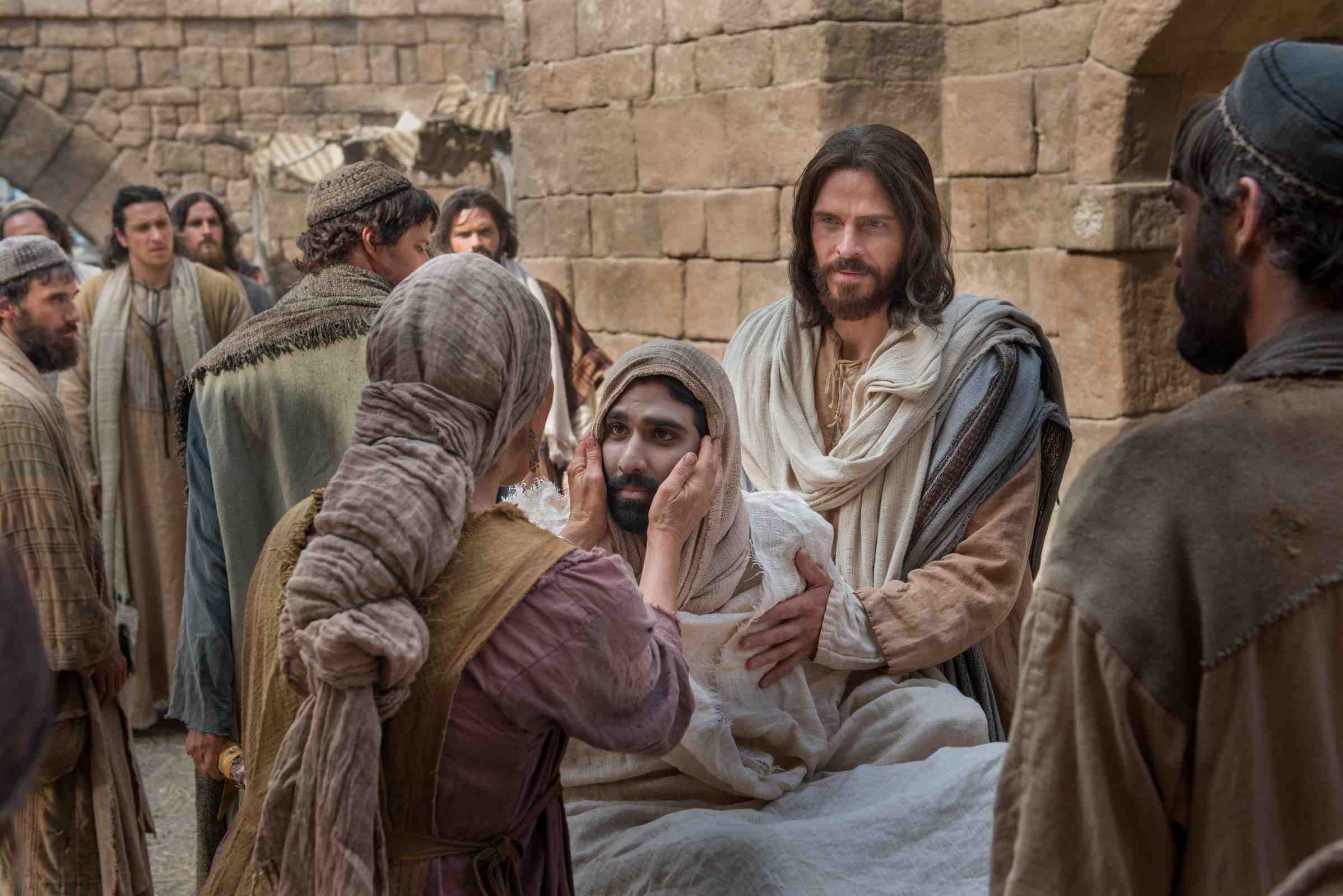Returning to Life

The miracle of our Lord Jesus Christ when He raised the son of the widow of Nain is one that is only mentioned in the Gospel of St. Luke (Luke 7: 11-17). It is one of the three miracles regarding raising the dead mentioned in details in the Bible, along with raising the daughter of Jairus (Matthew 9, Mark 5, and Luke 8), and raising Lazarus (John 11).
This miracle bears many beautiful meanings of Fine. I will just give brief summary of some of these meanings:
+ The scene of the dead young man being carried, paints a picture of humanity which was on the road to perdition so Christ visited it, changed its path, and revived it once more.
+ It is also the scene of every soul that died in many sins and the church cries out for it, so Christ comes to revives it and returns it with joy to be nestled in the Church again.
+ Christ is the only person who can stop this march towards death. He is the only one, who is capable to transform death to life and sorrow to joy. And He is the only one, who is capable to return man to life once more.
+ Death is the fruit of sin, a very bitter fruit. It reveals the repulsiveness of sin and the danger of underestimating it no matter how small it appears to be.
+ The scene of the funeral reveals that man will depart this world with nothing to take. So he must account for that day, and not to put his hope in this world and its wealth. Perhaps the saints, such as Saint Paula the first hermit, offer a role model in learning from such circumstances.
+ “He had compassion on her and said to her, ‘do not weep’ ” The compassion of Christ is the fountain from which all the plans for our salvation sprung out. And it continues to be the fountain that overflows with blessing and joy on all who come to Him.
+ “Then He came and touched the open coffin.” Touching the coffin is a sign of coming in contact with the love and the power of Christ. It is also an indication to the power that we obtain form coming in contact with the Holy body and blood of Christ in partaking of the Holy sacraments.
+ “Young man, I say to you, arise.” The word of Christ is capable and mighty. With one simple word, He summoned the spirit of the young man from the depth of perdition. It is He who is capable of giving life to whomever He wills (John 5:21) because He is the Prince of life (Acts 3:15). Therefore, when he died on the cross, death could not lay its hands on Him (Acts 2:24), but rather He bound Satan and destroyed his reign over us.
+ “So he who was dead sat up and began to speak. And He presented him to his mother.” After resurrection, which we obtain through baptism and continuous repentance, Christ hands us to our mother, the church, so that we embrace her and live under her wings. So we would enjoy her richness, the warmth of her love, the nourishment that she prepares for us, which are the sacraments and the fulfilling patristic teachings.
+ “God has visited His people.” He always visits us, passes by us, wants to change our lives to the better, and cares to transform our sorrow to happiness and our tears to joy and gladness. He longs to change our path from heading to the grave to the path of returning to life once more. God always visits us with His words and healing touch, so blessed is he who reacts to these touches and these words, by this I mean communion and sermons. Thus, his life is renewed and his path is changed. And his sorrow, tears, and sadness become joy, gladness, and blessings.